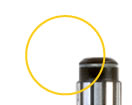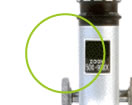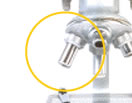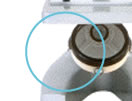High-speed transcranial magnetic force pulses to drive stem cell migration
Karl Deisseroth (Bioengineering)
Bret Schneider (Psychiatry)
When stem cells are implanted in the brains of mammals, they typically do not behave in the manner needed to restore proper function: they either remain growing in tight clumps, or cannot be directed reliably to the areas where they are needed. Without a way to guide the migration of transplanted cells, effective stem cell treatments in the CNS will not be possible. We have developed a method for controlling stem cell movement without requiring direct contact, using extremely powerful pulsed magnets to guide stem cells that have been incorporated iron particles. We have successfully tested this approach in the benchtop, and now wish to test the approach in laboratory animals. We are developing a method that may one day allow partial repair of damaged brains in diseases like cerebral palsy and Alzheimer's Disease. |










